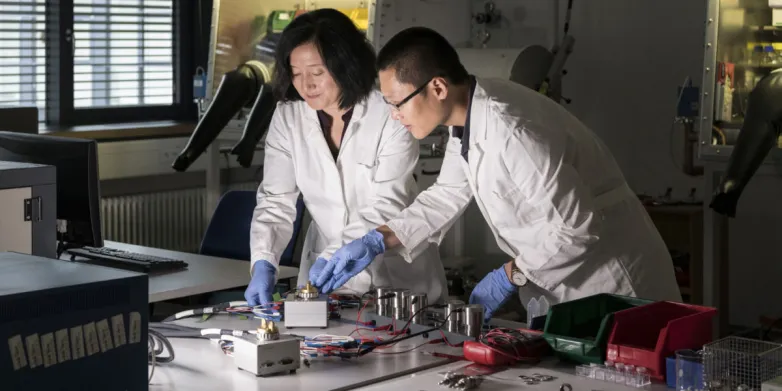Calcium batteries cool down with new electrolyte
Oct 10, 2019 09:01 PM ET
- Scientists at Germany’s Karlsruhe Institute of Technology have developed a new class of electrolytes they say could bring calcium batteries – currently only a lab technology – a step closer to being a practical reality for energy storage.

German scientists have achieved a major breakthrough in the development of calcium batteries which they claim, with further lab work, could eventually provide a cheaper, more environmentally friendly alternative to lithium-ion technology.
One of the biggest problems for the technology to overcome, according to scientists working as part of the Center for Electrochemical Energy Storage Ulm & Karlsruhe (CELEST), is the development of a suitable electrolyte to enable such devices to charge at room temperature.
“It’s only been a few years since experimental electrolytes, and thus prototypes of the calcium battery [existed],” said Zhenyou Li, energy storage post-doc at Karlsruhe Institute of Technology. “These allow a charging process but only at temperatures beyond 75 degrees Celsius and are still prone to unwanted side reactions.”
The CELEST group presented a solution in the paper Towards stable and efficient electrolytes for room-temperature rechargeable calcium batteries, published in Energy & Environmental Science.
A first step
The paper describes a new class of electrolytes based on organic calcium salts which enable room-temperature charging. According to the researchers, the electrolytes also exhibited “state of the art electrochemical properties” in terms of oxidative stability, ionic conductivity and the capability of long-term reversible cycling.
The researchers noted there is still plenty more work to be done. “The new electrolytes are a first important step,” said CELEST director Maximilian Fichtner. “We have a long way to go before we can get to the marketable calcium battery.”
Demand for lithium batteries is expected to grow exponentially and concerns remain over the safety of the technology and the mid and long-term availability of several materials essential to their production. As a result, alternative storage technologies are a popular area for research.
The latest discovery has hoisted calcium batteries up a list of lithium alternatives which includes supercapacitors, sodium-ion and lithium metal options. Fichtner said calcium is a particularly strong candidate thanks to its potential for high performance and its availability. “Calcium is the fifth most abundant element in the earth’s crust,” said the CELEST director. “It is equally available on Earth and offers the benefit of being safe, non-toxic and cost-effective.” He added, calcium can absorb two electrons per atom and supply a similar voltage to lithium.
Also read
- Pace Digitek switches on 2.5-GWh battery-storage plant in Karnataka
- CATL-led Indonesia Battery Integration Project breaks ground—US $6 billion for a full value-chain hub
- CNNP Optoelectronics brings utility-scale perovskite modules out of the lab
- Low-Temperature Sequential Deposition Lifts Inverted Perovskite Solar Cells Efficiency Record
- EDF Acquires 500-MW Gate Burton Solar Project from Low Carbon
